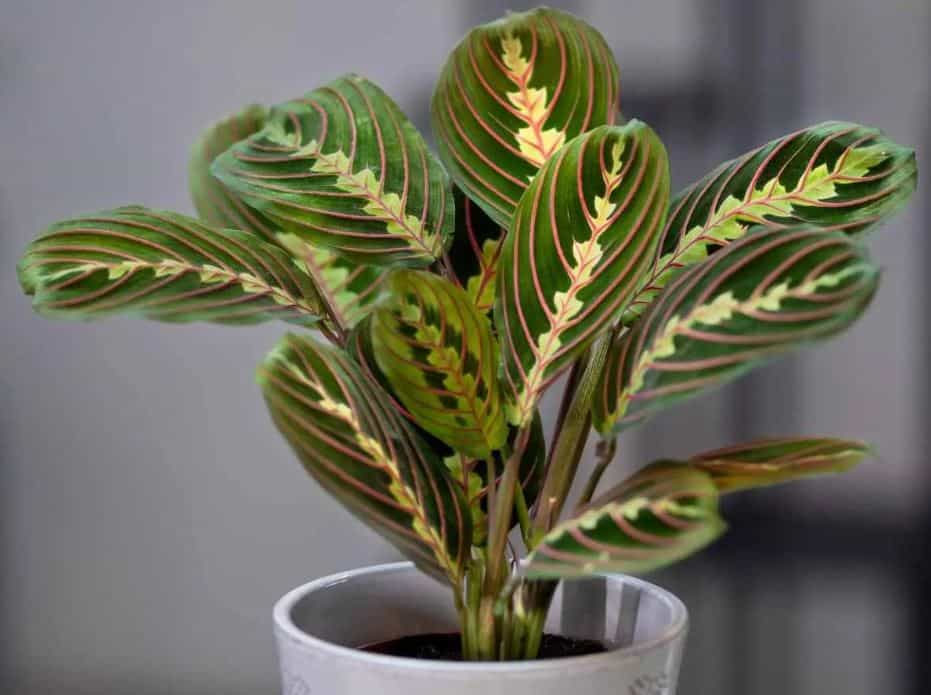Tropical indoor plants give the house a luxuriant, exotic impression. The waving leaves of red-veined prayer plants (Maranta leuconeura “Erythroneura”) are another interesting feature! For a red prayer plant to thrive, highly certain climatic and social circumstances must exist. The Maranta red prayer plant is a demanding little specimen that won’t hold back from communicating its needs to you. Read on for maintenance advice and troubleshooting hints for red prayer-plants.

About Red-Veined Prayer Plants
The red prayer plant is a common and lovely houseplant that is a tropical plant native to Brazil. Maranatha is its scientific name, and the variety is known as “Erythroneura,” Latin for “red veins.” Another name for the plant is “herringbone plant” because the red veins are arranged in a herringbone pattern.
While it works best as an indoor hanging plant in temperate climes, it becomes a ground cover in hotter climates.
A prostrate, evergreen species that emerge from rhizomes is the maranta plant. It may reach 12–15 inches (30.5–38 cm). The stunning foliage is generally oval and consists of 5-inch (12.5 cm) long olive-green leaves with noticeable crimson midribs and herringbone-patterned veining. The undersides of the leaf are even lighter than the center, which is a paler shade of green.
The plant’s capacity to “pray” is its finest feature. The plant’s reaction to light is known as a nastic movement. The leaves lie flat during the day, but at night, they rise upward as if in prayer. Additionally, it enables the plant to store moisture at night.
A Red Prayer Plant’s Maintenance
Tropical species of maranta inhabit the forest’s understory. They need wet soil and shaded, dappled light. They like temperatures between 70 and 80 °F (21-27 °C). In colder weather, the plant won’t pray, the colors won’t be as intense, and some leaves may even start to wilt, turn brown, or fall off.
The colors of the leaf will also be impacted by really intense light. There will be adequate light without affecting the color of the leaves in the center of a semi-bright room or near a northern window.
The plant has highly precise water requirements. The ground must always be moist but never soggy. A crucial tool for caring for red prayer plants is a moisture meter. In the spring, fertilize with diluted indoor plant food.
Red Prayer Plant Problems
The Maranta plant has little disease or insect problems when cultivated indoors. Sometimes, fungus problems may appear on the leaves. Water straight into the soil below the leaves to get around this issue.
Ensure the soil is well-draining to avoid fungus, gnats, and root rot. One part loam, two parts peat moss, and one part sand or perlite make up a nice combination. Mites and mealybugs are frequent pests outside. To counteract, use horticultural oil sprays.
Due to its shallow root structure, the red-veined prayer plant loves to be pot-bound and should be in a somewhat shallow pot. The yellowing of leaves’ tips might be caused by too much salt. The plant will rapidly grow healthy new leaves if you place it in the shower and thoroughly wet the soil.


